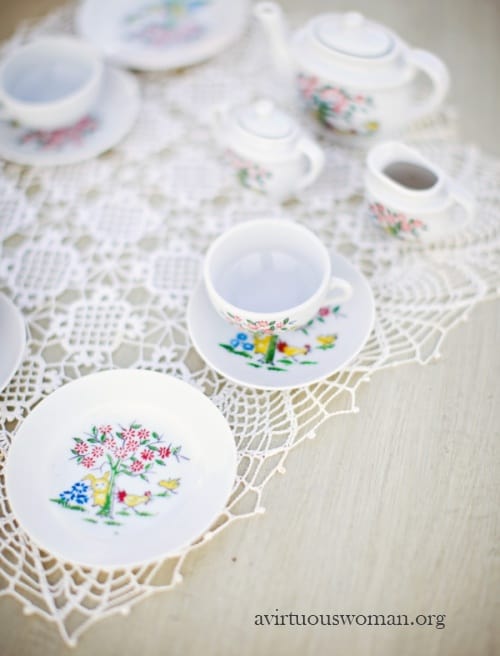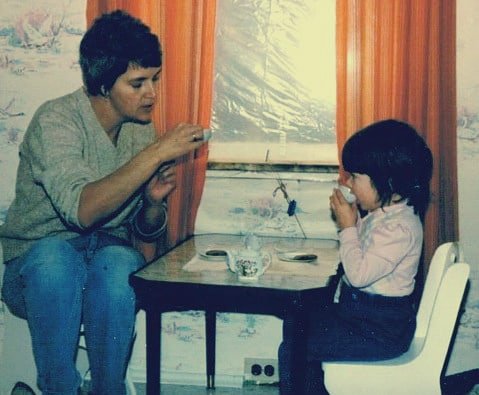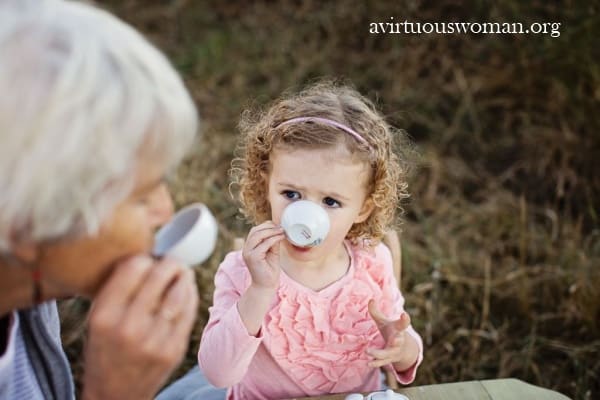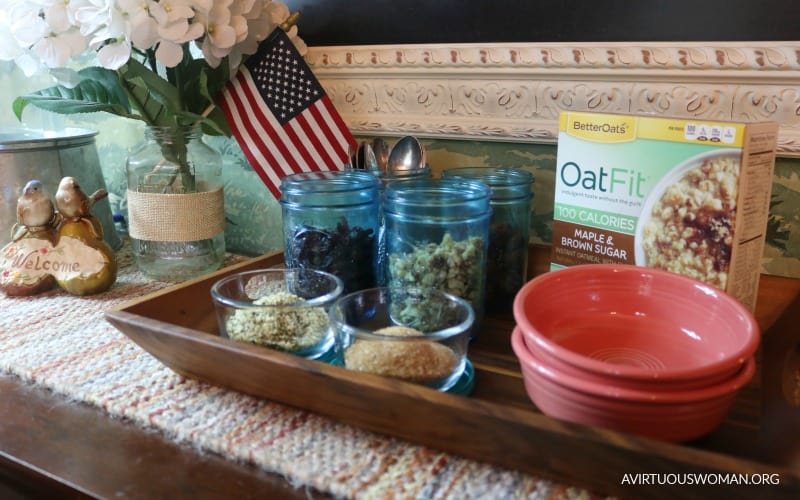A Spot of Tea

Preserving a Legacy of Family, Faith, and Food – November 1 – December 31.
Once upon a time my mother had a friend who believed my family needed to experience the finer things in life. My parents were Mennonite farmers, scratching an existence from rocky soil in the Canadian Shield area of Manitoba. My dad went door-to-door selling eggs and sharing the Gospel. I believe this is how my parents met the Wintrups, a couple of British descent.
I remember visiting their home, so different from ours. Heavy furniture stuffed the rooms. White lace covered white tablecloths, which covered padded tables. Austrian crystal and heavy silverware lay interspersed with gold-rimmed bone china.
We only had “every day” dishes. No doubt some plates were cracked, their floral emblems partially worn off. We children ate off tin plates with dents here and there.
Mrs. Wintrup felt every woman needed elegance in her life, and she gave my mother an 8-place-setting of Alicia Rose, a Swinnerton china, which we used for special occasions all my life. When my mom had a stroke and went into a nursing home a few years ago, my sisters agreed that Alicia Rose could come home with me, so it is still in use for Christmas, Easter, and Thanksgiving. (Shh. . .don’t tell, but we sometimes pull it out for birthdays, too!)
Having brought my mother to a certain degree of respectability with this lovely pink-rose china, Mrs. Wintrup looked at the five daughters of our household and felt we were also in need. She sent at least two boxes of dolls that had belonged to her own daughter, which allowed us to play orphanage and hospital quite nicely. Any surprise three of my sisters grew up to be nurses? I think not.
But the real treasure was a child-sized china tea set I adored. I’m sure the green plastic set is what we were allowed to use in the playhouse Dad built for his girls. See? We weren’t completely bereft! But the shiny white china dishes were special, with their bunnies and baby chicks and bright flowers, like sunshine poured onto a plate. I’m not sure if the set was actually given directly to me, or if I ultimately received it by default as the youngest. Either way, it lives at my house and I’m not letting go.

Like “big people” china sets, mine is not for every day. One needs to plan these tea parties. When my daughter was 3, she invited her paternal grandmother over for tea. Granny perched on one of the tiny chairs and sipped real tea out of miniscule cups. As maid for the occasion, I was subject to commands from my daughter as she pointed at the kitchen and requested, “more tea, please!”
The little box of bunny-and-chick dishes has been tucked away for many years now, and the child-sized table my dad made bit the dust many moves ago. As granddaughters began to arrive, my husband and I found a drop-leaf table in great shape at a second-hand store. We pulled the two sturdy chairs from storage and repainted them so that little girls would have a place of their own at our house.

In the fall of 2012, my family decided to hire a photographer and record some memories around the farm. My oldest granddaughter, age two-and-a-half, is not too keen on posing for photos these days. Also asking for a smile is over-doing it. As we tossed around ideas for engaging her in the occasion, my mind went to the cardboard box filled with child-sized china. Mary had never seen these dishes before. This plan just might work.
The day of the photo shoot bestowed gorgeous fall weather upon us, but Mary awoke with the beginnings of a bad cold. It was definitely going to take more than “say cheese!” to get smiles out of her.
After we’d taken some of the bigger group shots, we brought the vintage table out into the field and tucked the two little chairs under the drop-leafs. I spread out a doily my grandmother crocheted many years ago and began to lay out the plates, saucers, and cups. Mary was definitely curious by this stage and soon trotted over to have a closer look.

With Teddy and Mr. Froggy wedged into one of the little chairs, she began to serve pretend tea. Eventually they allowed others to join the party. Grandma for a few minutes, then Granny, who’d once had tea with Mary’s mommy. After a while we introduced Mary’s baby sister and cousin to the tea set, which thankfully is tougher than it looks.
Watching Mary’s delight in the brightly painted tea set made me realize it won’t be too much longer before she can be trusted to sit at the big-people table and eat Christmas dinner from gold-rimmed Alicia Rose plates. Did Mrs. Wintrup intend to give my family a legacy? Because, indeed, she has.
 [tooltip text=”TOOLTIP TEXT”]Valerie Comer‘s life on a small farm in Western Canada provides the seeds for stories of contemporary inspirational romance. Like her ancestors before her, Valerie and her husband of over 30 years grow much of their own food, preserving vast amounts of it by canning, freezing, and dehydrating, and passionately teach this lifestyle to the next generation on the family farm. Supplying healthy food–local food, organic food, seasonal food–so that her delightful young granddaughters can grow strong bodies and minds is worth every effort. Valerie’s fiction debuted with a novella in Rainbow’s End anthology from Barbour, May 2012.[/tooltip]
[tooltip text=”TOOLTIP TEXT”]Valerie Comer‘s life on a small farm in Western Canada provides the seeds for stories of contemporary inspirational romance. Like her ancestors before her, Valerie and her husband of over 30 years grow much of their own food, preserving vast amounts of it by canning, freezing, and dehydrating, and passionately teach this lifestyle to the next generation on the family farm. Supplying healthy food–local food, organic food, seasonal food–so that her delightful young granddaughters can grow strong bodies and minds is worth every effort. Valerie’s fiction debuted with a novella in Rainbow’s End anthology from Barbour, May 2012.[/tooltip]
You can read all of the articles in the Preserving a Legacy series here.






